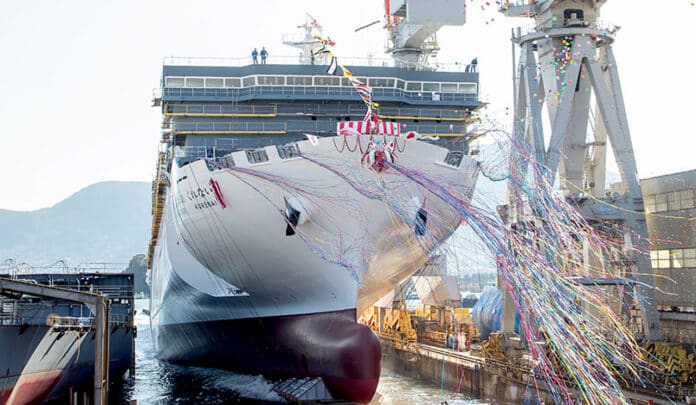The giant Mitsui O.S.K Lines (MOL), Tokai University, and Akishima Laboratories have entered into an agreement to start a joint study related to wind-powered propulsion of vessels by application of aerospace engineering technologies.
Previously, MOL, MOLTT, and Akishima Laboratories jointly developed the “ISHIN ship design,” which reduces greenhouse gas emissions by using wind as a propulsive force. The developers have moved ahead with the adoption of the design and will now implement more advanced joint development aimed at optimizing the hull shape for wind-powered vessels.
The hulls of these ships feature a shape that reduces wind pressure from both the bow and the sides. It uses lift from diagonally opposite winds, in addition to ensuring a smooth, streamlined flow of wind. This design will be adopted on two cutting-edge LNG-powered ferries ordered by MOL.
The advanced development adopts aerospace engineering technologies in an ISHIN ship design in collaboration with Dr. Kota Fukuda, Associate Professor at the Department of Aeronautics and Astronautics, Tokai University, Japan.
Adoption of ISHIN ship design on the vessel can reduce greenhouse emissions by about 5% on the Asia-North America route but targets a reduction of more than 12% by introducing aerodynamic technologies accumulated in the aerospace engineering field.
Dr. Fukuda and his team have already applied this technology to high-performance solar cars and unmanned solar airplanes and further application of their own simulation technology to the medical field. Through this joint study, they will expand their research fields to ship engineering and ocean-going vessel development.
The study is also supported by the Japan Ship Machinery and Equipment Association (JSMEA) through its “2022 new product development subsidy program”.
